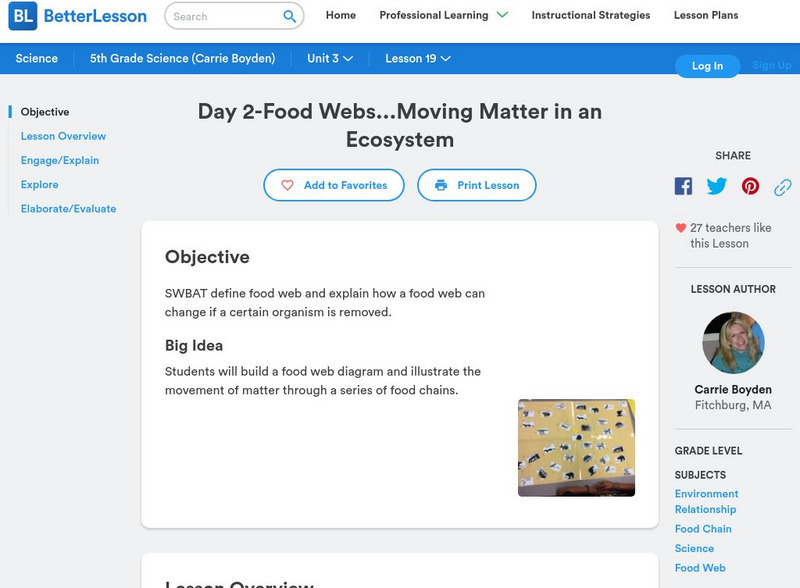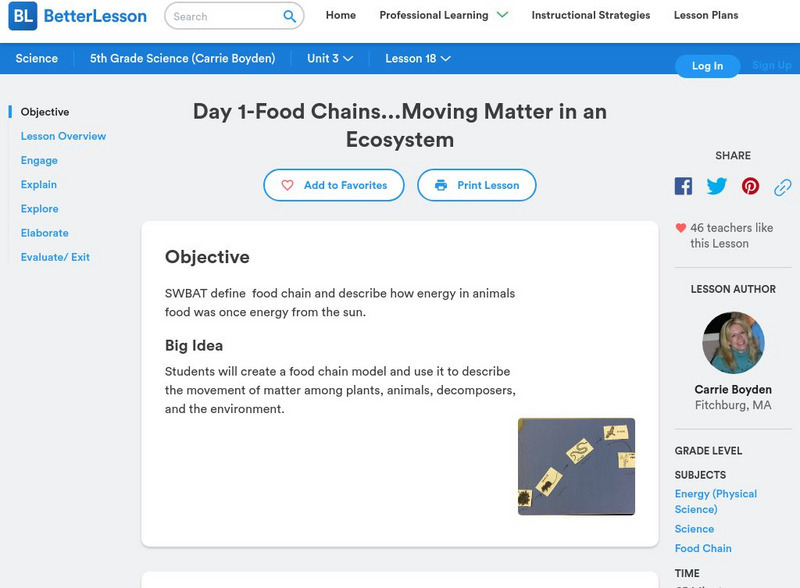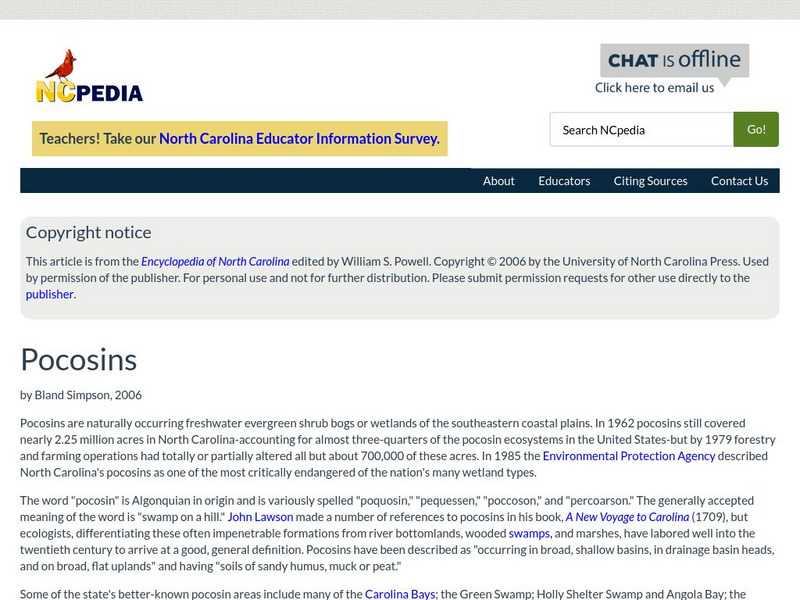Curated OER
School Ground Naturalization Project
Students determine the best location for a potential naturalized project for a school ground.
Curated OER
Let's Create an Ecosystem
Seventh graders are introduced to the concept of ecosystems by allowing student to create their own ecosystem in a jar.
Curated OER
Habitat Breakdown
Fourth graders examine how insects and organisms are impacted by factors that are essential to an organism's survival in particular habitats. They participate in a habitat game in which they imagine themselves as insects.
Curated OER
Hyperlink Habitats
Students explore a series of Web pages designed to illustrate the interconnectedness of a tropical rainforest ecosystem. They discuss their research, create maps and research a local ecosystem.
Curated OER
Webbing the Food Chain
Students compose a visual representation of the food chain cycle using Inspiration educational software.
Other
Eco Library: Panoramas
Features amazing 360 degrees interactive panoramas for students to help them better understand ecological variation on our planet. Searchable by biome/ecosystem type, location, or ecological phenomena they depict.
Better Lesson
Better Lesson: Food Webs Moving Matter in an Ecosystem(day 2)
Students will build a food web diagram and illustrate the movement of matter through a series of food chains. Resources include detailed plans, examples of student work, videos of the lesson in action, and sample food webs.
Better Lesson
Better Lesson: Food Chains Moving Matter in an Ecosystem (Day 1)
Students will create a food chain model and use it to describe the movement of matter among plants, animals, decomposers, and the environment. Resources include a detailed lesson plan, student handouts, pictures of a completed chain,...
Utah Education Network
Uen: Nhmu: Living Food Web
Fourth graders will be able to name some plants and animals that live in Utah's desert, forest or wetland ecosystems.
BSCS Science Learning
Bscs: Frog Symphony
This inquiry focuses on analyzing spatial and temporal data for frog calls to determine the best time of day and location to hear a symphony of frogs. Click on the link for teaching guides and handouts.
American Institute of Biological Sciences
Action Bioscience: The Threat to Biodiversity & What Can Be Done
Invasive species such as zebra mussels are threatening the ecosystems they are overrunning. Meet some of the unwelcome intruders and find out what they're doing and how their actions can be curbed.
American Institute of Biological Sciences
Action Bioscience: Light Pollution and Ecosystems
This article and the resources it provides explains how artificial outdoor lighting wreaks havoc on wildlife.
PBS
Pbs Kids: Plum Landing: Seed Racer
Help Plum collect all the different kinds of seeds before time runs out. Fun, interactive game shows how different seeds propagate. Look out for those crows!
National Audubon Society
National Audubon Society: Audubon Adventures: Ohio's Wetland Wonderland [Pdf]
This is a well developed lesson plan on Ohio's wetlands. This resource includes comprehensive information, an assessment, and supporting pictures. The resource is in PDF form.
Other
Open2.net: Ecosphere
Designed by the Open University and the BBC, this website from Open2.net explores ecosystems. Included is a lengthy discussion on closed ecosystems and their importance to research, as well as a virtual ecosystem, an interactive showcase...
State Library of North Carolina
N Cpedia: Pocosins
Pocosins are naturally occurring freshwater evergreen shrub bogs or wetlands of the southeastern coastal plains. In 1962 pocosins still covered nearly 2.25 million acres in North Carolina-accounting for almost three-quarters of the...















